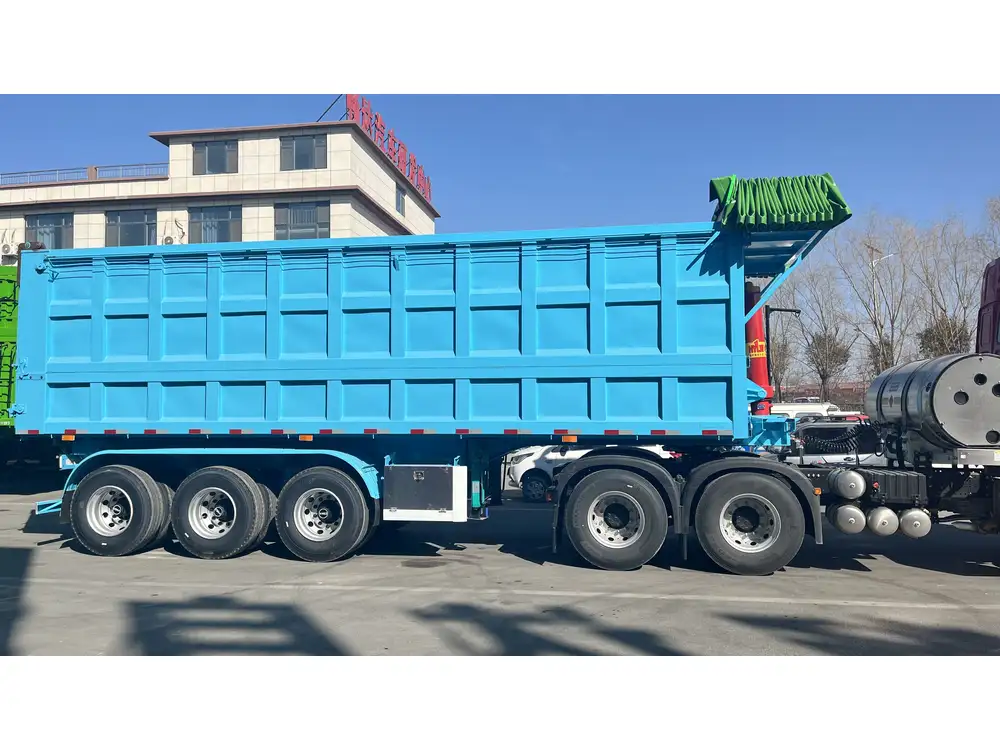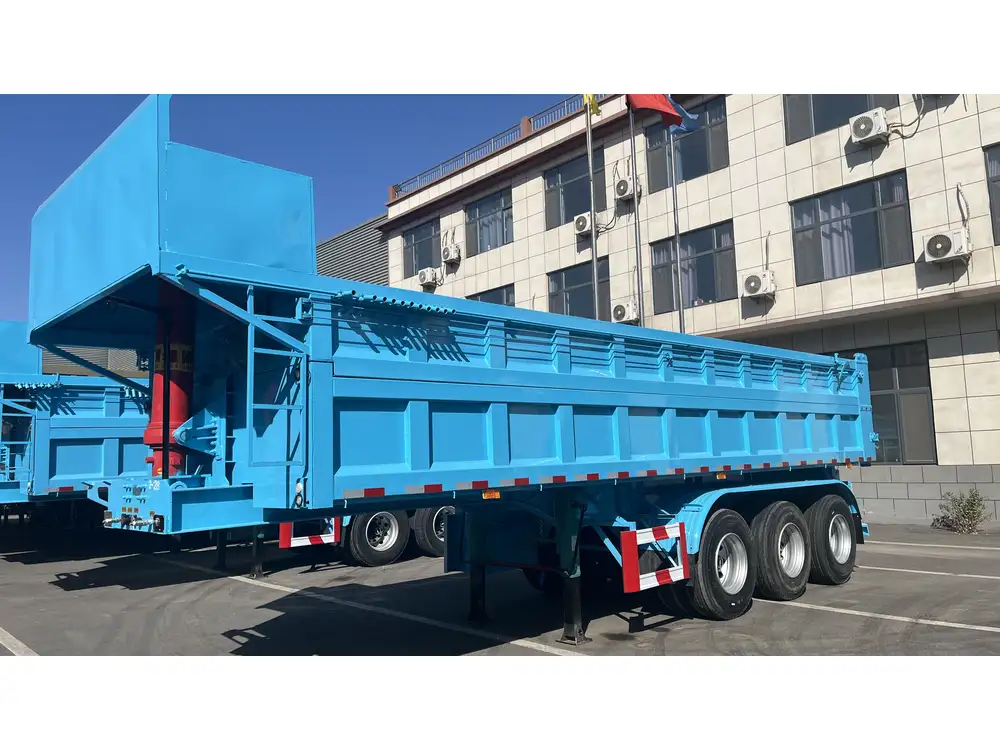Understanding Semi-Trailer Design
The semi-trailer is a critical component in the logistics and transportation industry. Its design is intricately connected to performance, safety, and efficiency. Among various design features, the adjustability of rear wheels stands out, particularly regarding weight distribution, maneuverability, and overall load management. In this article, we explore the multifaceted significance of adjustable rear wheels on semi-trailers.
Key Reasons for Adjustability

1. Enhanced Load Distribution
One of the primary reasons for adjustable rear wheels is to achieve optimal load distribution. Semi-trailers often carry varying loads, affecting how weight is distributed across the axles. By adjusting the position of the rear wheels, operators can ensure that the weight is centered and balanced, minimizing the risk of overloading a single axle.
- Importance of Load Distribution
- Prevents tire wear and tear.
- Ensures compliance with legal weight limits.
- Reduces the likelihood of accidents due to imbalance.
2. Improved Maneuverability
Adjusting the rear wheels can significantly enhance the maneuverability of a semi-trailer, particularly in tight spaces. When the rear wheels are positioned further back, the trailer has a larger swing radius, which can be advantageous when navigating sharp turns or congested areas.
- Maneuverability Factors
- Shortening the wheelbase for tight corners: Placing wheels closer enhances turning ability.
- Stability when reversing: Rear-wheel adjustments can improve control during backing maneuvers.
3. Weight Limits and Regulations Compliance
Regulatory standards often dictate the weight limits that vehicles can carry, especially in the trucking industry. The ability to adjust rear wheel positions allows operators to comply with these regulations and avoid overloaded conditions that could lead to hefty fines or unsafe road conditions.
- Compliance Mechanism
- Spreads the load to maintain axle weight within legal limits.
- Helps in passing roadside inspections more efficiently.

4. Fuel Efficiency Considerations
An overlooked yet crucial aspect of adjustable rear wheels is their impact on fuel efficiency. When a trailer is optimally loaded and balanced, it exerts less strain on the engine, translating into better fuel economy. Furthermore, aerodynamics can be improved by adjusting the trailer configuration, leading to enhanced fuel savings over long distances.
- Fuel Economy Insights
- Reduced drag factors with optimal loading.
- Enhanced tire performance through balanced weight distribution.
Types of Adjustable Systems
A. Sliding Axles
Sliding axles are a common mechanism found in semi-trailers that allow for easy adjustments of the rear wheels. Typically, these systems utilize a series of rails and pins to lock the axles into place after adjustment.
- Advantages of Sliding Axles
- User-friendly operation with minimal tools required.
- Quick adjustments in the field.

B. Air-ride Suspension Systems
Modern semi-trailers often incorporate air-ride suspension systems, which can include adjustable axles that can change loading angles and wheel positions dynamically.
- Benefits of Air-Ride Systems
- Enhanced ride quality reduces load shifts.
- Greater adaptability to various loads and road conditions.
C. Manual Adjustment Systems
Some older or more basic models rely on manual systems for adjusting wheel positioning. While less common, they still find application in specific scenarios.
- Limitations of Manual Systems
- Slower adjustment process.
- Requires more physical labor, which could lead to inconsistencies in adjustment quality.
Adjustability Mechanisms in Detail

1. Mechanics of Adjustment
Adjusting the rear wheels involves an interplay of mechanical components specifically designed to facilitate movement. Typically, this is achieved via:
- Ratchet Systems: Allow for incremental adjustments.
- Locking Mechanisms: Ensure that the rear wheels remain fixed during transit.
2. Best Practices for Adjustment
To optimize adjustability, certain best practices should be adhered to:
| Best Practices | Description |
|---|---|
| Regular Maintenance | Ensuring that all moving parts are lubricated and free of debris. |
| Weight Checks | Conducting weight checks before and after adjustment. |
| Training Operators | Ensure that personnel are well-trained in adjustment procedures. |
3. Technological Advances
The evolution of technology has significantly impacted the adjustability of rear wheels on semi-trailers. Advanced systems now often integrate digital interfaces for easier monitoring and adjustment.
- Smart Technologies
- Integration with GPS and load monitoring systems.
- Automated adjustments based on dynamic load conditions.

Challenges Associated with Rear Wheel Adjustability
While the benefits of adjustable rear wheels are pronounced, some challenges also exist that must be carefully managed.
A. Complexity in Adjustments
Adjustable systems can sometimes create confusion among operators, especially when parameters for adjustment aren’t well understood.
B. Potential for Misalignment
Improper adjustments can lead to misalignment of wheels, which can create safety hazards and increase wear on tires.

C. Increased Maintenance Needs
More complex systems may require additional maintenance and oversight, contributing to operational costs.
User-Centric Considerations
Addressing Operator Concerns
As we consider the significance of adjustable rear wheels, it’s also crucial to address the concerns and challenges operators might face regarding these adjustments:
Ease of Use: Operators should be well-versed in the mechanisms of adjustment, requiring robust training programs that emphasize practical skills and safety.
Documentation: Adequate documentation should accompany semi-trailers, detailing the adjustment mechanisms along with maintenance schedules.
Consistency in Application: Regular evaluations of weight distribution and stability can help operators optimize performance and make necessary adjustments in a timely manner.

Conclusion
The adjustability of rear wheels on semi-trailers is a dynamic feature that reflects the need for efficiency, safety, and regulatory compliance in the transportation industry. This adjustment capability improves load distribution, enhances maneuverability, ensures compliance with regulations, and can lead to considerable fuel savings. However, it also introduces challenges that must be managed through thorough training, regular maintenance, and an emphasis on the importance of adjustments.
By understanding and embracing the benefits of adjustable rear wheels, operators can significantly enhance their operational efficiency, contributing to safer roads and reduced costs. The evolution of technology in this sphere holds the promise of even greater optimization in the future, ensuring that semi-trailers remain an essential and effective part of the transportation landscape.



